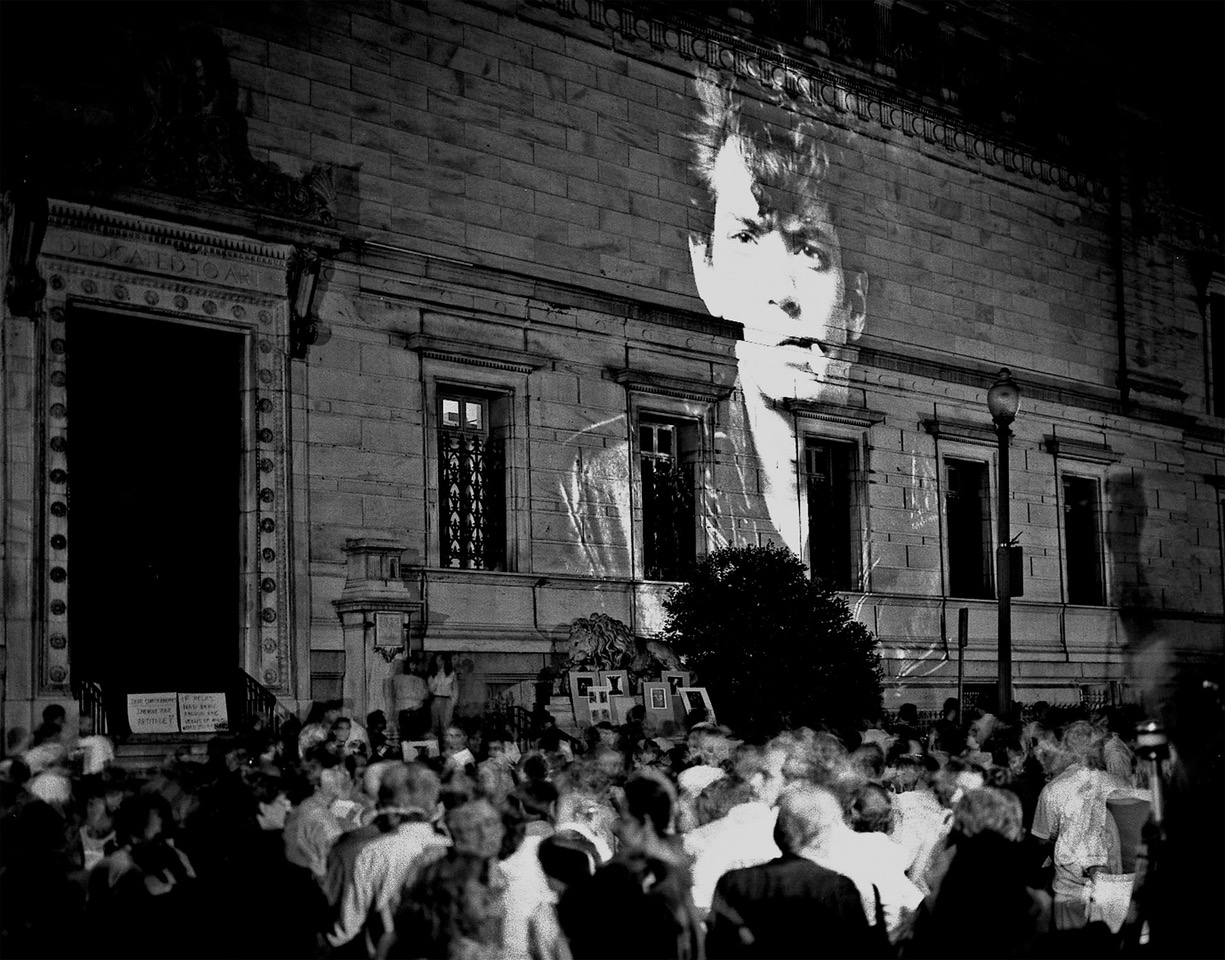By Ruth Steinhardt
Thirty years after the Corcoran Gallery of Art canceled a controversial show by the photographer Robert Mapplethorpe, the Corcoran School of the Arts and Design at the George Washington University will revisit the cancellation, the backlash, and the reverberations of both through the art world in Washington, D.C., and beyond.
“6.13.89,” opening June 14, will run through October in the atrium of the Flagg Building and will explore the “interstitial moments” of the controversy through archival documents, said Corcoran Director Sanjit Sethi, exhibition curator.
“This exhibition is a pedagogical process of reclaiming something that happened to the institution 30 years ago and asking what we have learned,” Mr. Sethi said. “We can’t as an educational institution move forward in a visionary capacity unless we confront major demons and ghosts in our past.”
“Robert Mapplethorpe: The Perfect Moment” was a retrospective scheduled to run just months after Mr. Mapplethorpe’s 1989 death of complications from AIDS. Mr. Mapplethorpe was a frank chronicler of his life as a gay man in a gay community, and the exhibition would include explicit depictions of violence and sexual acts alongside his formal portraits and still compositions.
But because it received partial funding from the National Endowment for the Arts, the exhibition was swept up in conservative lawmakers’ ongoing crusade against “obscene” art. On June 13, cautious Corcoran administrators announced that the exhibition would not run. In the following weeks and months, the gallery stood at the center of a firestorm of protest and controversy. Fellow artists canceled D.C. shows in solidarity, gallery members withdrew their support and hundreds of protestors gathered in front of the Flagg Building, across from Ronald Reagan’s White House, to register their disapproval.
“This was during the AIDS crisis, and there was talk of homophobia and censorship because these photos have imagery that made a lot of people uncomfortable,” said Rina Alfonso Osawa, M.A. ’13, the exhibition’s project manager. “The Corcoran wasn’t quite ready as an institution to make that leap into showing minority artists.”
To tell the story of the moment and its aftermath, Corcoran students and alumni delved into the gallery’s archives for the primary source documents that surrounded it.
One side of the exhibition is designed in a loose chronology, beginning with a letter of inquiry from “The Perfect Moment’s” would-be curator, continuing through discussions about exhibition design and initial shows of leeriness from Corcoran administrators. Its fulcrum is the official cancellation document, displayed in the middle of the atrium. On the other side are documents around the backlash: stacks of call logs showing the volume of disapproval, photographs from the protest and more.
“We want to show the relationship between the overall timeline and planning of ‘The Perfect Moment’ and how that turned into a landslide afterwards, and what that says about the institution and about the art world at that very specific time,” Ms. Alfonso Osawa said.
For Mr. Sethi, the story is one of trauma—of “an institution under siege.” Not only was the Corcoran physically surrounded, its walls serving as a canvas for protest imagery, but it was under siege from within as employees and patrons registered their own disappointment.
“The Corcoran suffered a significant fracture to its philosophical foundation,” Mr. Sethi said. As a museum dedicated to “American genius,” the Corcoran had in some ways betrayed itself by adopting a definition of genius that excluded marginalized communities.
Mr. Sethi and Ms. Alfonso Osawa said the exhibition is a chance to acknowledge a defining moment and use it to further the Corcoran School’s goals of empathy, creativity and innovation.
As a Corcoran alumna, Ms. Alfonso Osawa said she is struck by the deep involvement of members of the school community, including Mr. Sethi’s co-curators Maddy Henkin and Artie Foster, both M.A. ’19.
“The fact that most workings of this exhibition are being handled by students and alumni, people who are part of the school and for whom the Corcoran has been a second home, says something about what we think this institution could be,” she said. “Something tremendously exciting could happen as a result.”
“6.13.89” is open to the public from June 14 to Oct. 6. Exhibition hours are Tuesday to Friday, 10 a.m. to 6 p.m., and weekends from 1 to 6 p.m. at the Flagg Building, 500 17th St. An opening night party will be held June 13 at 6 p.m. in the Flagg Building.


